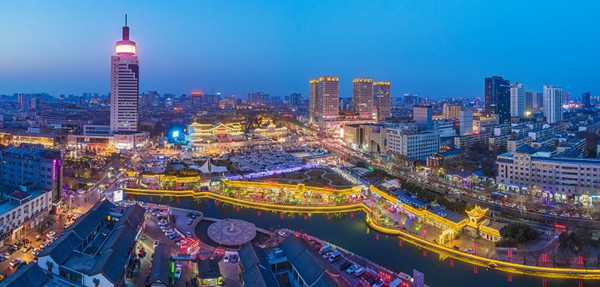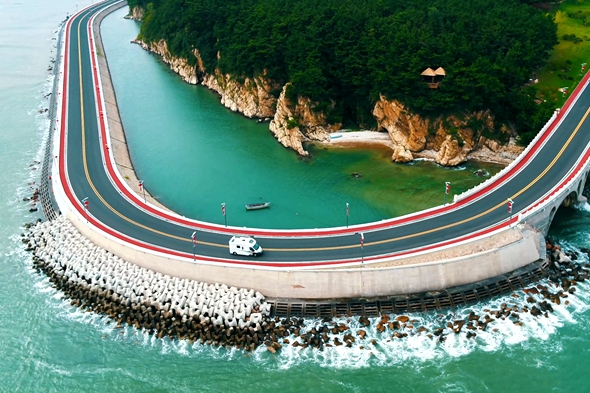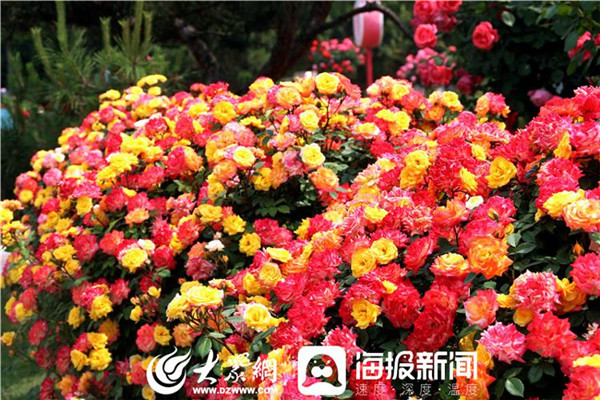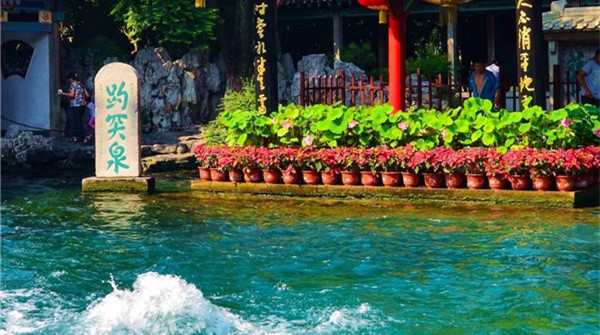Jining: City on Grand Canal

Colored lights illuminate Jining city in East China's Shandong province. [Photo provided to chinadaily.com.cn]
Jining is an old city with ancient buildings and old streets, and a place that has stories of its deep connection with the Beijing-Hangzhou Grand Canal.
More than 700 years ago, the Beijing-Hangzhou Grand Canal started flowing through Jining, making the city an important juncture of land and water as well as a major traffic hub for travelers heading from the south to the north.
Jining was not only superior in geographical location, but also became the political and economic center of the southwestern region of Shandong province as well as the administration center of the canal.
According to historical records, Jining was a thriving transport hub with many boats and ships full of people and cargo along the banks of the canal.
Heart of the Canal
Jining has always been considered the heart of the Grand Canal. It has been said that the whole canal depends on Jining's smooth operations.
Nanwang town in Jining's Wenshang county is the area with the highest elevation along the Grand Canal. The special landform featuring low-lying at both ends and a bulge in the middle formed an arch-like river course and the shipping was frequently suspended due to insufficient water.
How does the Grand Canal handle so many ships so easily? "Supplying water is the key," said Liu Jiankang, associate research librarian at the Cultural Relics Protection Center of the Wenshang County Culture and Tourism Bureau.
According to historical records, in the ninth year of the reign of Emperor Yongle in the Ming Dynasty (1368-1644), Bai Ying, a traditional irrigationist, suggested that building the Daicui Dam on the Kanhe River estuary will divert the water of the Dawen River to the Grand Canal.
"It was a systematic project which was very scientific, complete and meticulous to flexibly use various water sources such as the river, lake, springs and floods to supply sufficient water for navigation, effectively ensuring the smooth flow of the Grand Canal for more than 500 consecutive years," Liu said.
Because of the importance of the Jining section, the top administration of the Grand Canal had been headquartered in Jining since the Yuan (1271-1368), Ming and Qing (1644-1911) dynasties, signifying that Jining is the real "capital city of the canal".
Jining also gained its nickname "72 Yamen (an ancient Chinese government)" due to many subsidiaries working under the top authorities. Till now, many roads in Jining are still named after these subsidiaries, and there are a total of 66.
The Beijing-Hangzhou Grand Canal was included on the world cultural heritage list on June 22, 2014. By then, Jining had 59 canal civilization heritage sites and 84 related historical civilization heritage sites, which made the city an essential part during the application process.
A commercial center driven by water
The convenient transportation on the canal has made Jining a historical commercial center.
According to historical records, Jining’s economic development peaked in the late Ming Dynasty and the early Qing Dynasty.
The booming handicraft and trade industries formed a lot of commercial streets and alleys on the river banks, and the most famous is Zhugan (bamboo poles) Alley.
The alley, which has a history of more than 700 years, got its name for being home to many handicraft workshops that specialized in bamboo weaving and local specialties, said He Daixin, a 67-year-old local.
"My ancestor moved from Suzhou, Jiangsu province to Jining to be a managing officer on the canal during the middle Qing Dynasty," He said. The He family has been living in the alley since then.
According to He, there were over 190 households engaged in the bamboo handicraft industry. "The front of the households were the sales areas, and the workshop and the warehouse were in the back, and the second floors were for accommodation," He said.
In addition, the canal economy also promoted the development of many time-honored brands such as Guangyutang.
Jining had hundreds of traditional Chinese medicine businesses in the late Ming Dynasty and early Qing Dynasty periods, and Guangyutang was the largest in terms of scale.
Founded in 1578 by Li Guangyu, an outstanding student of an imperial physician, Guangyutang was the first drugstore chain in China's history.
Emperor Qianlong of the Qing Dynasty tasted a tonic named Erxiangao that was produced by Guangyutang and found it to be effective in refreshing human body. The emperor awarded a wooden tablet that was engraved with the name of the tonic in his own handwriting to Guangyutang, which won the store an enviable reputation.
After more than 440 years of development, Guangyutang has developed 1,180 classic prescriptions. The technique of making its signature product Erxiangao has been listed as a national intangible cultural heritage item.
There are a host of other famous brands along the canal in Jining including a sesame pancake, which was also highly praised by Emperor Qianlong, Shi Family mutton soup and Qingsanheng, a store specializing in producing traditional Chinese cakes.
Most of the brands date back to the Qing Dynasty. They have all dealt with rise and fall with the development of the canal economy and still exist today as a memory of the ancient city's history on the canal.

 Nishan Forum on World Civilizations
Nishan Forum on World Civilizations Explore magnificent Yellow River culture in Shandong
Explore magnificent Yellow River culture in Shandong

